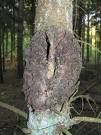Picea Abies Tree Information
Images of Picea Abies:






Picea Abies grows in the following 9 states and provinces:
Connecticut, Hawaii, Illinois, Indiana, Maine, Massachusetts, Michigan, New York, PennsylvaniaInformation about Picea Abies:
The Picea Abies is commonly known as the European Spruce as well as Norway Spruce.
The currently accepted scientific name of Norway spruce is Picea abies (L.) Karst. . There are no currently accepted infrataxa, although a number of cultivars exist .Norway spruce is native to the European Alps, the Balkan mountains, and the Carpathians, its range extending north to Scandinavia and merging with Siberian spruce (Picea obovata) in northern Russia . It was introduced to the British Isles as early as 1500 AD, and is widely planted in North America, particularly in the northeastern United States, southeastern Canada, the Pacific Coast states, and the Rocky Mountain states . Naturalized populations are known from Connecticut to Michigan and probably occur elsewhere .In its native range, Norway spruce occurs in pure stands, transitional stands mixed with Scotch pine (Pinus sylvestris), or mixed stands with European beech (Fagus sylvatica) and European silver fir (Abies alba). Scattered Norway spruce occurs in seral stands of European aspen (Populus tremula) or hairy birch (Betula pubescens). Classification systems for Scandinavian forests where Norway spruce and/or Scotch pine are the major species are based on ground vegetation . Common groundlayer species include bilberry (Vaccinium myrtillus), lingonberry (V. vitis-idaea), heather (Calluna vulgaris), and woodsorrel (Oxalis spp.) . Good sites for Norway spruce occur on Oxalis-Myrtillus types and fair sites are indicated by Myrtillus. Vaccinium types are usually rather barren and not suited for good spruce growth . Understory species most often associated with Norway spruce in Poland include raspberry (Rubus idaeus) and European mountain-ash (Sorbus aucuparia). Mature Norway spruce forests typically have very little groundlayer vegetation .Some of the information provided here is attributed to:Sullivan, Janet. 1994. Picea abies. In: Fire Effects Information System, [Online]. U.S. Department of Agriculture, Forest Service, Rocky Mountain Research Station, Fire Sciences Laboratory (Producer). , available at the USDA Fire Effects Information System (FEIS) website